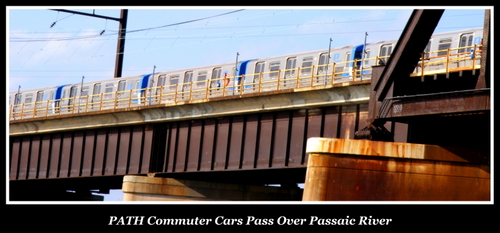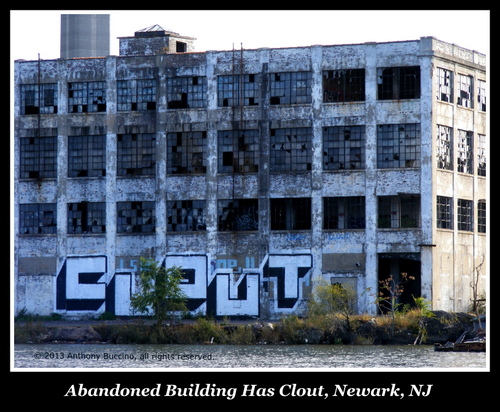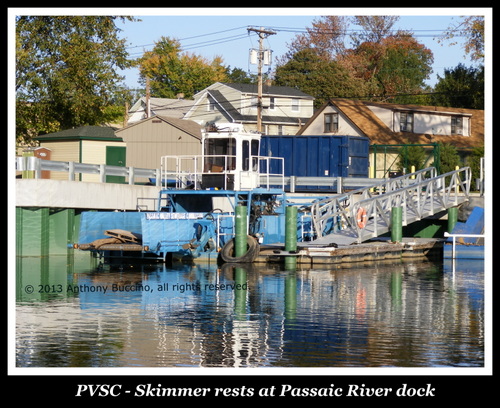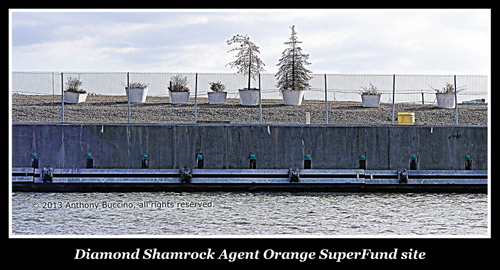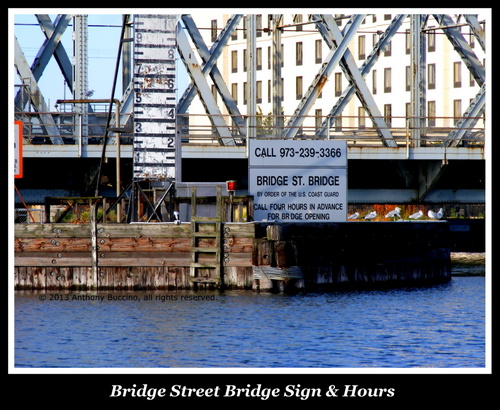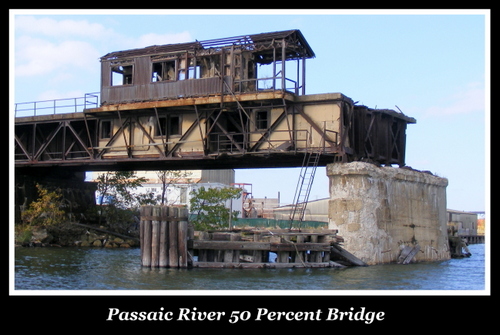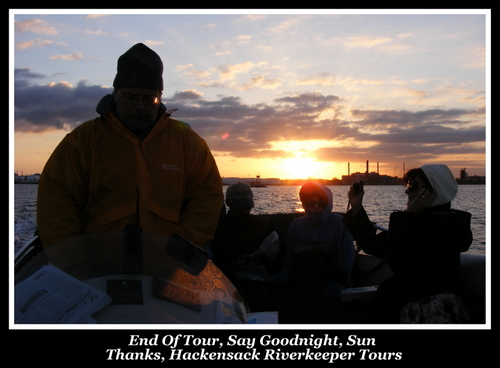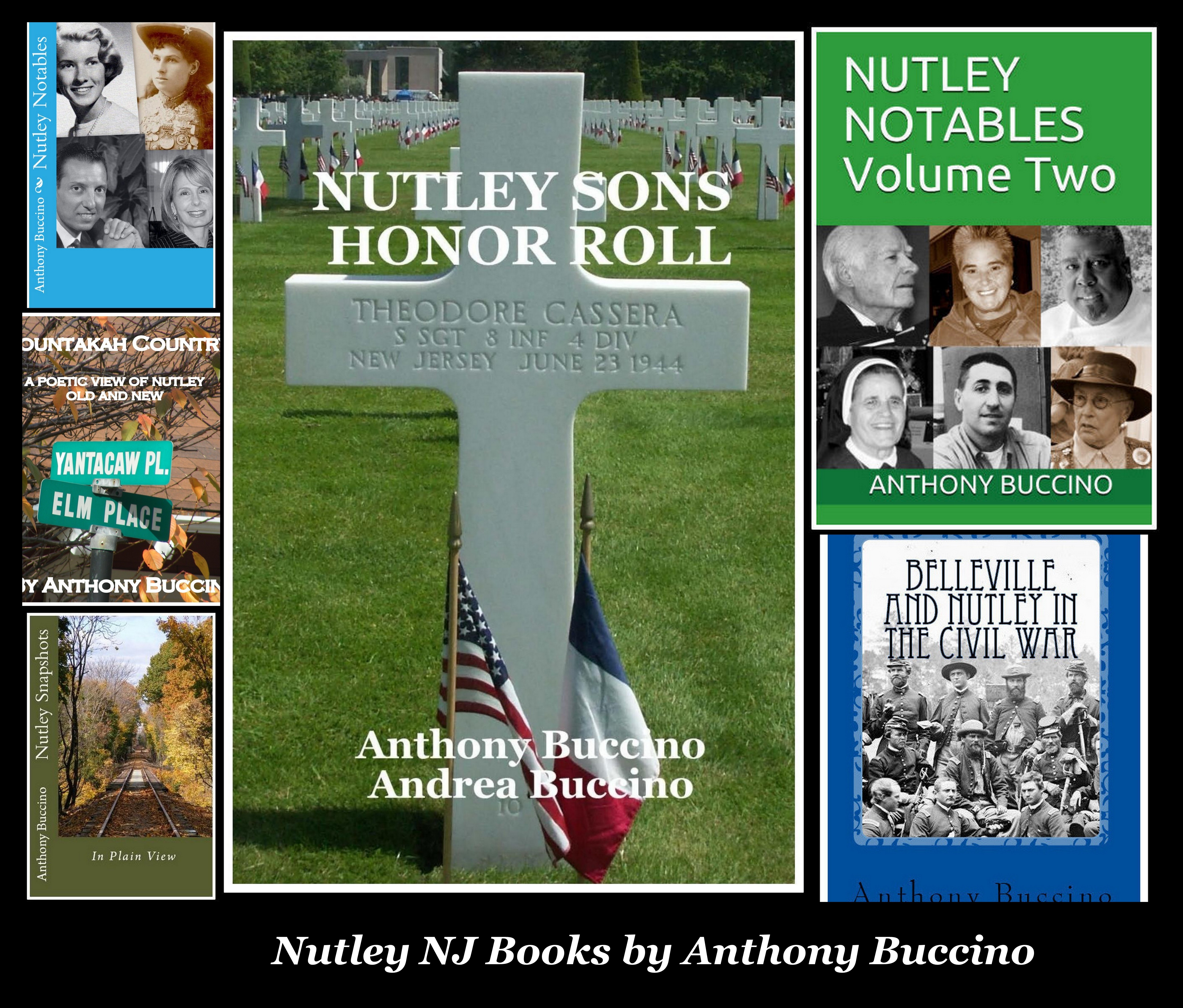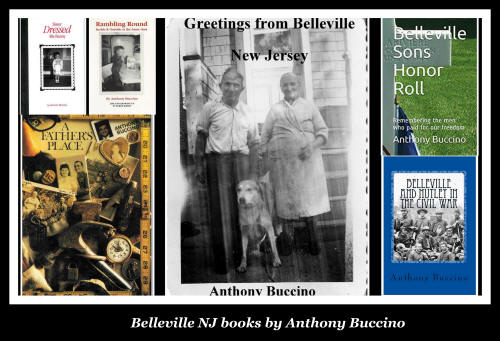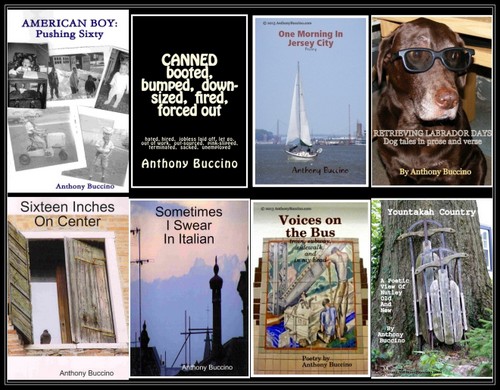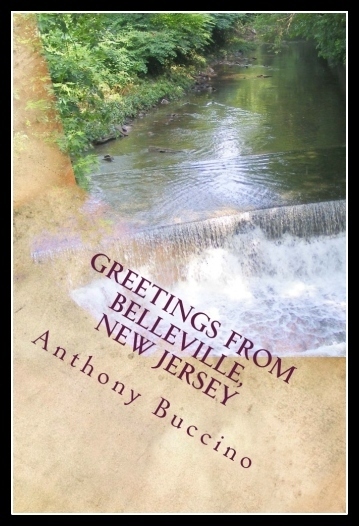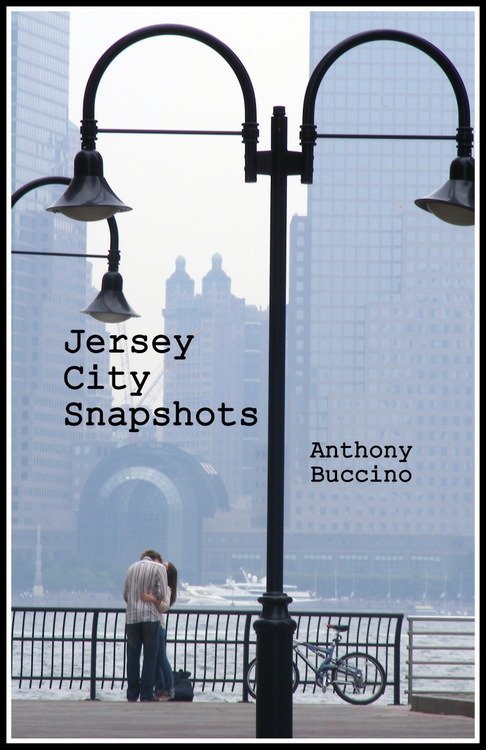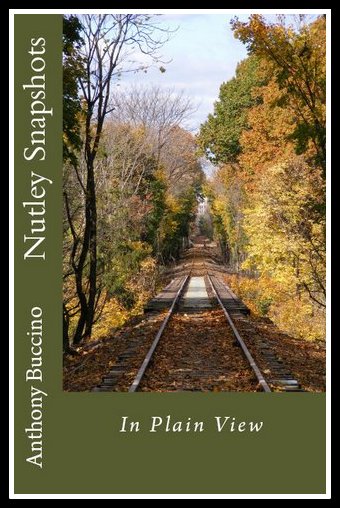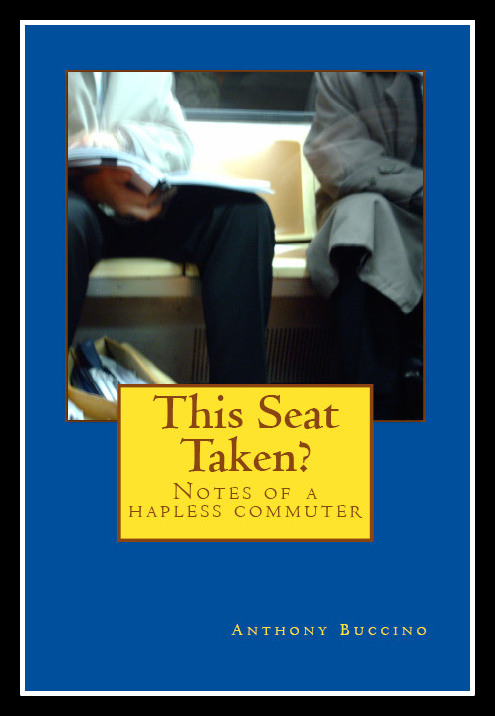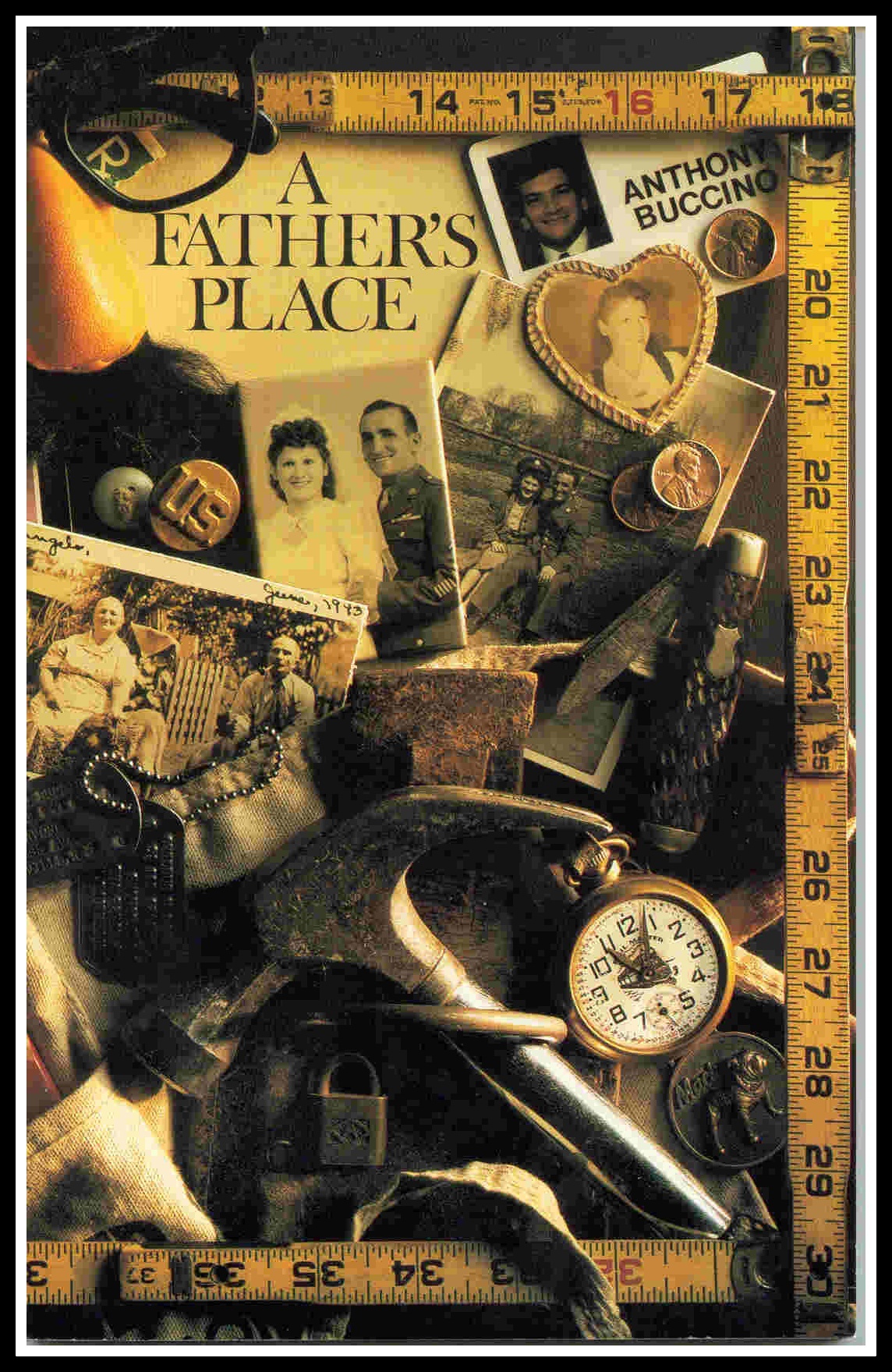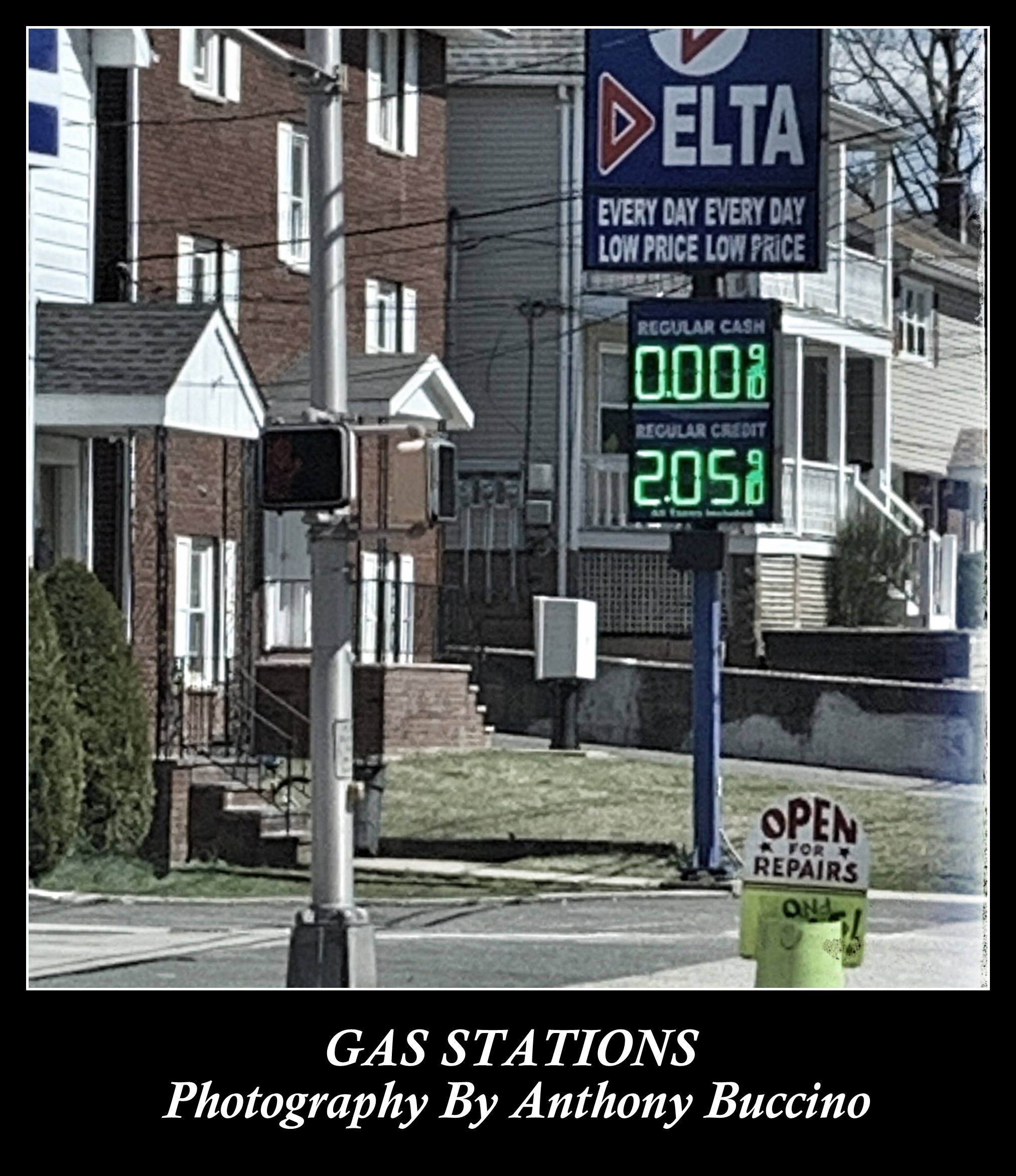Passaic River RiverKeeper TourBoating on the Hackensack River, Newark Bay, and mighty Passaic RiverBy Anthony BuccinoLooking upstream we forget we are smack in the middle of millions of people in a bustling metropolis. Lush green trees fill out the banks, the water is wide and peaceful ahead of us. Pay no attention to that SuperFund site buried under concrete. |
|
|
We are gliding under the Witt Penn Bridge in Jersey City. There on the north side naked trestles await the next generation bridge. The thunder we hear riding under the PATH train bridge. We are clear soon enough to see the commuter train exit the bridge heading west to Harrison and Newark.
How many times have I been on that PATH train while we stopped as the bridges were drawn to let some tall masted ship pass by? From where we stood, sardine-like, in the tin can railcar, we could only ever guess at the holdup outside. How many times have riders looked north from those trains and guessed at the real name of Fraternity Rock rising from the swamps. Our Hackensack Riverkeeper boat tour is heading south on the Hackensack River. We'll cross Newark Bay and head up the Passaic River to the Route 3 bridge north of our group's Nutley hometown. Capt. Hugh Carola, just call him Captain Hughie, explains what we pass on the shores: a power plant here, a peak-power plant there, a jet-engine power plant there, an abandoned power plant yonder.
We see gulls. They are not sea gulls, says my friend and Backyard Birder Margo Beller who has taken a Riverkeeper tour to document all the birds she's seen here. I've always thought one seagull is the same as the next seagull. I suppose I should blame "Jonathan Livingston Seagull" but those birds all look alike. Well, they did until Capt. Hughie pointed to a gazillion gulls on a river pier and named the varieties and pointed out the difference in sizes. It seems there are more kinds of gulls than there are smartphone apps. Beller says the captain probably pointed out the black-billed gull, yes, I remember hearing about that one. I think some were brown. The other gulls in the crowd watching us pass by probably included herring, ringbill, and laughing gulls. A blur of a bird between us and shore made a noise like a machine gun. That's a kingfisher, the captain says.
As our pontoon boat swings out of the Hackensack River into Newark Bay, we tourists wonder why not simply motor directly across the expanse of open water we seem to be circling on this sunny Sunday afternoon. Our captain points out the water is shallow and his boss would be none too happy should we bottom out and be stuck in the mud. He says he's been stuck in the mud once and is careful not to let it happen again. Oh, the mud. Do we really want to know about the mud? Or all this water itself? This is, after all, an eco-cruise as in ecology. We pass folks fishing from boats and from docks, but the fish is hardly safe for consumption. The gulls seem to be doing fine, but they are not on anyone's menu.
We learn the history of transit on this river. About 200 years ago these reedy wetlands were a huge cedar forest. Our captain says pirates hid upriver in the woods, unlike Robin Hood, and the wealthy folks whose goods were being plundered coerced the authorities in Elizabethtown to burn the woods and thus deprive the buccaneers and raiders of their hiding places. You could call it overkill but it apparently worked. Now you must visit sporting events to see the Belleville Buccaneers play the Nutley Raiders. Another version we don't hear from the captain is that the cedar forests were coveted and plundered to make furniture until all the woods were gone. You could call that the first rape of what we know as the Meadowlands. Passaic Valley Sewage Commission has two skimmer vessels that patrol the river and Newark Bay.
The more recent assault occurred over decades as humans in all our hubris filled that steaming, stinking swamp with millions and millions of tons of trash until the swamp was unrecognizable and the garbage rose as high as the top seat in Giants stadium. About 40 years ago the trash was removed and the Meadowlands Sports Complex, including Giants stadium arose from the rubble. Meanwhile, for more decades than we can count, countless industries lined up along the Hackensack and Passaic rivers and spewed industrial waste into the passing waters. Though most of the manufacturing is gone, the Passaic River is a 16.5 mile SuperFund site. But we haven't learned much from our past. We still dump mostly-treated sewerage into the rivers. And when there's a big rain, well, you don't want to know the insults inflicted on our rivers.
Chugging along on the Passaic River we 11 tourists stare at one of the most famous SuperFund sites. It's encased in concrete several feet thick, like you'd see in the "Shelter Skelter" episode of "Twilight Zone". There, sitting atop the concrete even the graffiti artists won't go near are planters with evergreens. But from the river, the trees seem dead, or dying. A grim Charlie Brown Christmas tree reminder Agent Orange was invented to defoliate. Our directions from the highway to Laurel Hill County Park in Secaucus took us past the vacant former headquarters of Panasonic on Meadowlands Parkway. And now, about an hour into our three-hour tour we are passing downtown Newark on our left, and on our right a huge spaceship where they worship soccer.
"Don't take pictures of the FBI building," someone says. Or the railroad bridges overhead. Someone on the boat is pointing out one of the new waterfront buildings. It's the new Panasonic headquarters where she works. It’s convenient to Penn Station, she says, but she drives in every day. She notes it takes less time to drive than to use public transit. Oh, and the couple hundred dollars a month to park is well worth it. Over our heads PATH trains arrive in Penn Station. A few minutes later we are gliding under the William A. Stickel Memorial Bridge. It is the most overwhelming noise since we left Jersey City. Above us a double-decker NJ Transit train crosses a bridge into Newark. That bridge goes to the Broad Street station, someone says.
The bridges on this river have signs that tell you their names. What the Clay Street bridge doesn't tell you is to duck, duck low, as our pontoon barely clears the superstructure. The men and women around me laugh at the unmovable steel so close to our heads. It is a nervous laugh. And it happens again at the aptly named Bridge Street bridge and the nameless bridge from North Arlington/Kearny to Belleville. Captain Hughie points to where the First River flows from subterranean Newark into the Passaic River. Further up, he warns us of the turbulence from the Second River where silt and rushing water encourages our wide berth.
Looking upstream we forget we are smack in the middle of millions of people in a bustling metropolis. Lush green trees fill out the banks, the water is wide and peaceful ahead of us. Gulls follow in case we decide to cast food their way. We are momentarily in a world of our own. Now, we tourists are the natives as we slide past Nutley shores. Our trip has been organized by the Nutley Community Preservation Partnership, a recent citizens' group whose name says it all. This boat trip offers a chance to view our town from the river and to gain a sense of history each had with the other.
In the 1950s the government decided Kearny, North Arlington and Lyndhurst would have a long sliver of park land bordering the Passaic River. The west bank became Route 21, a concrete shortcut from Newark to Route 3 in Clifton, effectively blocking all water access from Belleville and Nutley. A hundred years ago Nutley had a yacht club on the river. The famous Yountakah Country Club was a few hundred feet from the river's edge. The west bank riverfront was dotted with large mansions, all gone now. Capt. Hughie bemoans the mundane monikers given these tributary rivers. First River, Second River and now the Third River before us in Nutley. The captain asks, why such drab names? We tell him Leni Lenape named the river Yountakah after their fall festival of the same name. The British settlers simplified the names to simple spelling and perfunctory words. Somehow, the Passaic and Hackensack rivers persevered due to similarly named cities.
Where does the Third River go in Nutley? Women on our boat claim that John Kingsland of the Kingsland Manor used schooners on this shallow river to move his harvested lumber. Could the river have been deep enough to float a schooner through the Delawanna tract? The river's route has been forced under the highway, twice, and encroached by the latest and greatest strip malls and warehouse outlet. Those boats were most likely shallow draft boats, more like barges, and, then, too, the forest-lined Third River was likely deeper 200 years ago. At last we reach the stanchions of the never-ending-construction of the new Route 3 bridge crossing from Lyndhurst and Rutherford into Clifton, Captain Hughie points out vertical lines running the height of the towering supports. He says the architect's detail will never be seen by anyone crossing over the bridge.
He could say the same for all we've seen and learned on our tour. The Meadowlands recovered well from vanquished timberland to trash heap into a thriving wetlands. And the rivers, well, man is making an effort to correct his spoilage. That work will not be completed in our lifetimes. But here we are, we 11 tourists, now charged with the intimacy of this world of gulls and fowl, and dark swirling waters below ominous working and abandoned rusting superstructures, and stewardship. It's a start. Happy trails. © 2013 By Anthony Buccino. Source: Riding Under the PATH Train first published on NJ.Com on Oct. 17, 2013 Consider taking a boat tour of the Hackensack River, Newark Bay and Passaic River with Hackensack Riverkeeper A Tour of One of America's Most Toxic Rivers video “... The Passaic River was famous for its fish till the water became foul about twenty years ago. The Indians resorted to the river for their winter supplies, a custom kept up by the white settlers. Shad, perch, roach-herring, bass, catfish, sunfish, smelts and even sturgeon, called “Albany Beef,” were caught in enormous quantities. This beautiful stream has the reputation of being the worst polluted river in the world. But it has been pointed out that as the contamination is largely chemical, it is not unsanitary in proportion to its color. However, the sentiment that the river must be restored to its pristine purity has prevailed. The act of the Legislature passed in March, 1906, will put a stop to its contamination, and in a few years, it is to be hoped, the words of Peter Sluyter, in 1679, will again come true. He wrote to his friends in Holland, “The river is the pleasantest we have yet seen, it being a pleasure to look upon its ever changing views, its evergreens of pine and cedar and its clean bottom and fresh clear water.” ...” Elizabeth Stow Brown, 1907 The History of Nutley, Essex County, New Jersey Photo Gallery: Hackensack Riverkeeper's Tours |
ANTHONY'S WORLDAnthony Buccino
Essays, photography, military history, moreNew Jersey author Anthony Buccino's stories of the 1960s, transit coverage and other writings earned four Society of Professional Journalists Excellence in Journalism awards. Permissions & other snail mail: PO Box 110252 Nutley NJ 07110 Follow Anthony Buccino GAS STATIONS Photography by Anthony Buccino resqme Emergency Keychain Car Escape Tool, 2-in-1 Seatbelt Cutter and Window Breaker Lifehammer Safety Hammer - Emergency Escape and Rescue Tool with Seatbelt Cutter
Shop Amazon Most Wished For Items
Support this site when you buy through our Amazon link.
|
Shop Amazon Most Wished For Items
Support this site when you buy through our Amazon link. |
|
